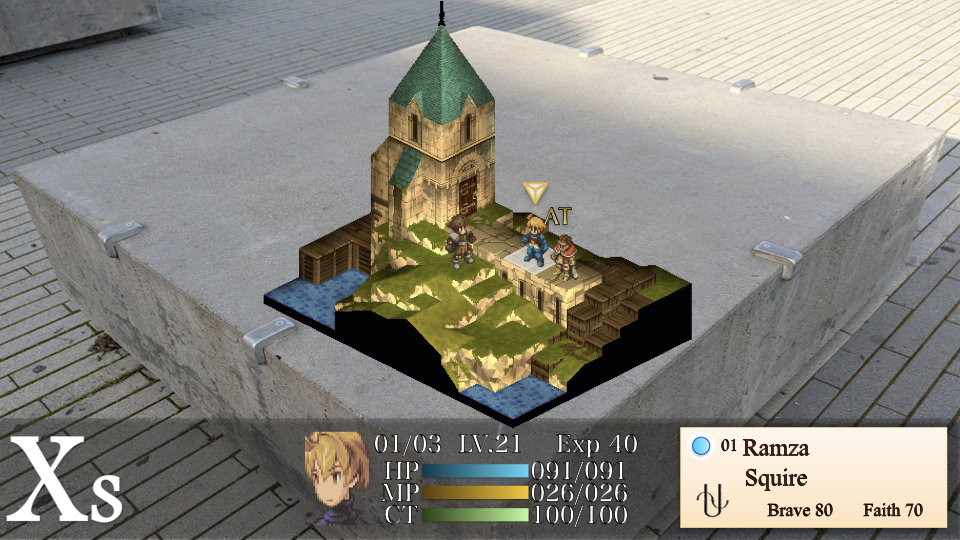
Due to hardware constraints and platform limitations of mobile AR glasses today, game designs are relatively simple compared to the games available in VR, powered by high-end PCs and consoles. However, that doesn’t mean commercial success is out of reach for AR game developers. In 2021, mobile games designed for Android and iOS are driving more revenue than PC and console games combined, based on business insights from Newzoo. The mobile gaming market is worth $90.7 billion in 2021. In comparison, PC has generated $35.9 billion while consoles have generated $49.2 billion.
The most popular market places for mobile games are the Google Play and iOS App Store. Through these app stores, mobile game development can be extremely lucrative, especially for game studios with resources to invest in performance tuning and hardware bug fixes. It is a tedious engineering effort to deliver a visually pleasing experience with high resolution and buttery smooth frame rates on mobile devices due to the infamous mobile fragmentation problem. It is common to see developers focus on a bug-free experience on iOS devices, as there are fewer devices to test and troubleshoot issues on. Companies that develop games on Android often turn to mobile device farms, such as Bitbar, AWS Device Farm, or Sauce Labs to ensure their games run well on all major flagship devices around the world.
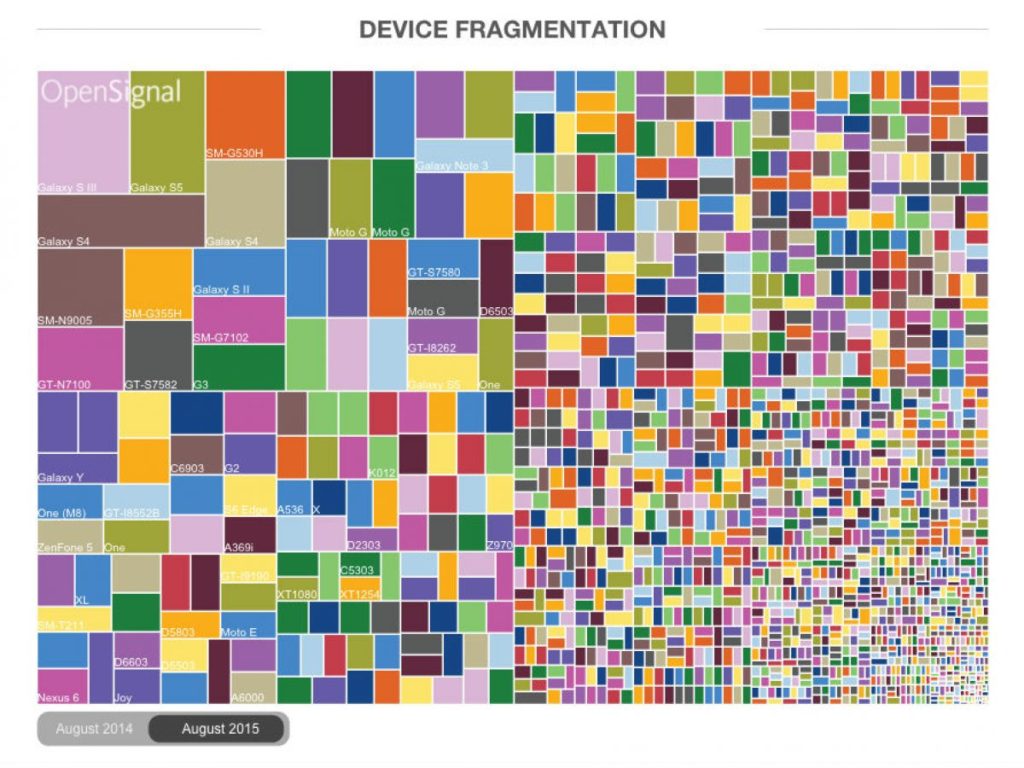
This is a well known industry problem, reported by OpenSignal, back in 2015. Unfortunately, this problem still persists today. According to MobileApps.com, Android will continue to be popular and fragmented through 2023.
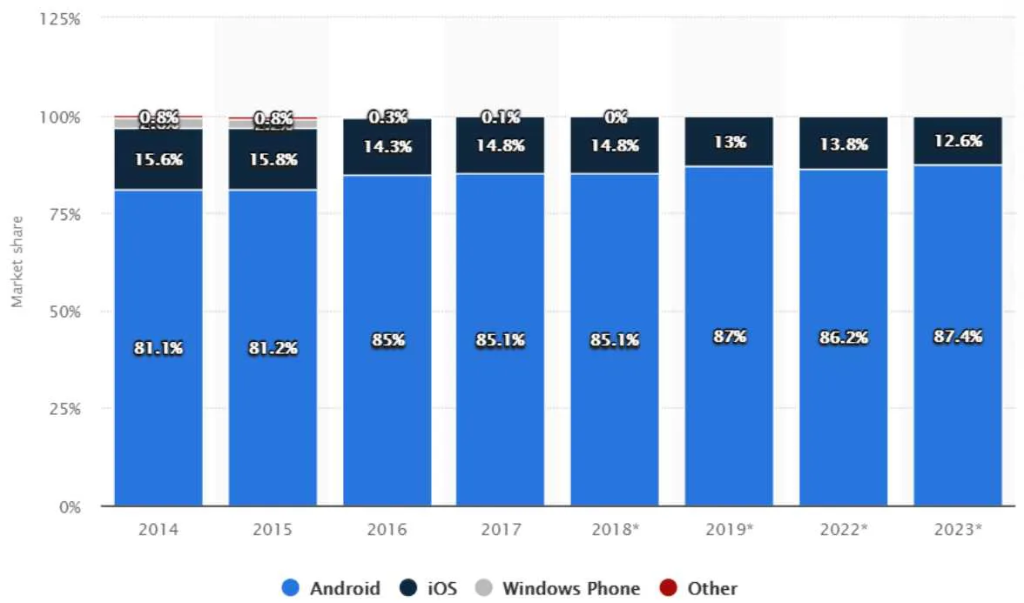
Surprisingly, “worldwide consumer spending on the Apple App Store in 2020 was $72.3 billion, while on Google Play in 2020, consumers spent close to $38.6 billion.”
It’s clear to see from the OS market distribution below, Android and iOS app stores are ideal places for mobile apps to gain exposure across global markets. The mobile app stores are crowded places, but games with a strong brand and stellar game reviews are consistently ranked at the top of the list of recommended mobile games. This allows companies to enjoy sustainable revenue streams and high visibility for new customers, to further strengthen the brand and continually roll out apps to the global markets.
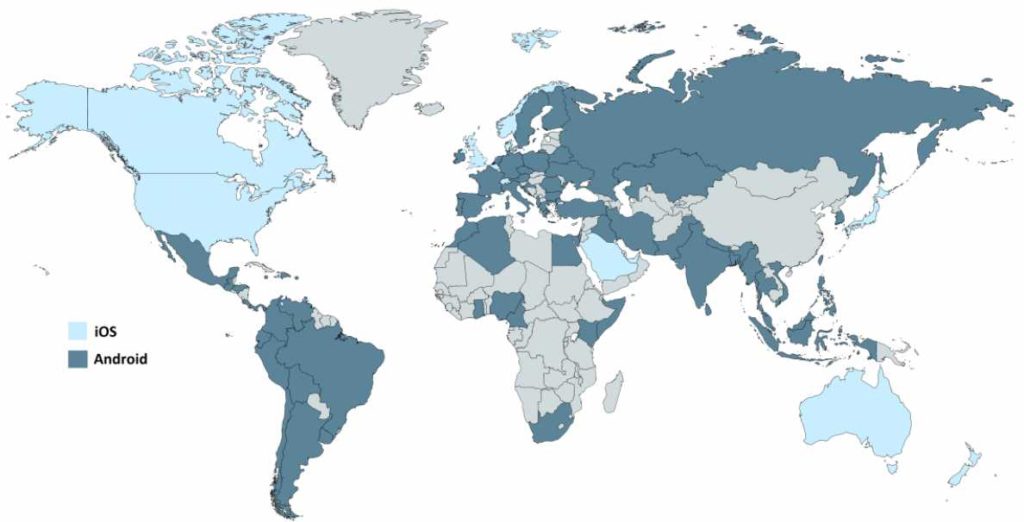
These business insights are well understood by top gaming companies. Tencent, Roblox, Supercell, Blizzard and Electronic Arts continue to invest a significant amount of time and resources into updating popular games and launching new mobile games. To consistently deliver compelling gaming experiences, industry veterans surround themselves with world class creative directors and developers, supported by a strong DevOps practice. Through a feedback loop between the developer and playerbase, mobile game publishers are able to review and update their data models to track key ingredients of popular games. During the Beta release process, publishers can fine tune the gaming experience through A/B testing. This is a critical phase before the official release, where valuable player metrics and market data are collected, allowing developers to have a successful product launch.
Many game studios in the XR market have yet to discover the formula to create a business around AR games, simply due to the lack of AR technology adoption. Of course, Niantic’s success with Pokémon Go is the exception. It’s worth noting, Google and The Pokémon Company had a major stake in Niantic Labs, and major investments went into the game development and promotional effort on both the Android and iOS app stores. Without good exposure on popular mobile app stores, XR developers are lacking vital data to understand what is fun and engaging. Gamers are quite happy to provide constructive feedback to the developers. Similarly, developers are keen on listening to suggestions and even complaints from their loyal fanbase, with the hopes of increasing player retention and profitability. With the built-in rating system of the mobile app stores and market APIs, developers can quickly get valuable feedback and understand nuanced opinions and preferences. These data points allow developers to deconstruct/reconstruct game designs and mechanics to produce highly engaging and down right addicting games. A few classic cases that clearly demonstrate this are:
- Candy Crush Saga – Puzzle game developed and published by King
- Clash of Clans – Strategy game developed and published by Supercell
- Hearthstone – Digital card game developed and published by Blizzard Entertainment
The above games are actually fairly straight forward in its design language, and are highly focused on community engagement and co-op support. Simplicity is not always the key. One of the most recent success stories in the mobile gaming market came from miHoYo, the developers of Genshin Impact, an action-role playing game that grossed over $2 billion in its first year of release. The passion and care that went into this game is immediately apparent through high-quality game trailers, cutscenes/game movies, character models, landscapes, voice acting, story telling, and music composition. The music of Genshin Impact stands alone, composed by Yu-Peng Chen and performed by the Shanghai Symphony Orchestra; inspired by classical, Chinese, and Japanese folk music. The game is an exceptional piece of interactive artwork with cross-platform support, including Android, iOS, Microsoft Windows, Nintendo Switch, Playstation 4 and Playstation 5.
It’s just a matter of time before AR games finds its niche in the gaming scene. Popular game genres that could lend itself well into AR are Turn-Based Strategy and Turn-Based Tactics, like Hearthstone or Chess. Unlike Genshin Impact – high frame rates, detailed landscapes and low-latency response times may not be as critical to have for commercial success in these type of games.
The classic game of Chess has already been developed for the Hololens, but it’s unlikely to see players gathering around Washington Square Park, in NY, donning AR headsets to play Chess. They’re going to want to play the real thing by virtue of its simplicity and portability of the Chess board and pieces. Normally, Chess players play for several hours at a time, so limited battery life of AR glasses today may be a deal breaker for most players.
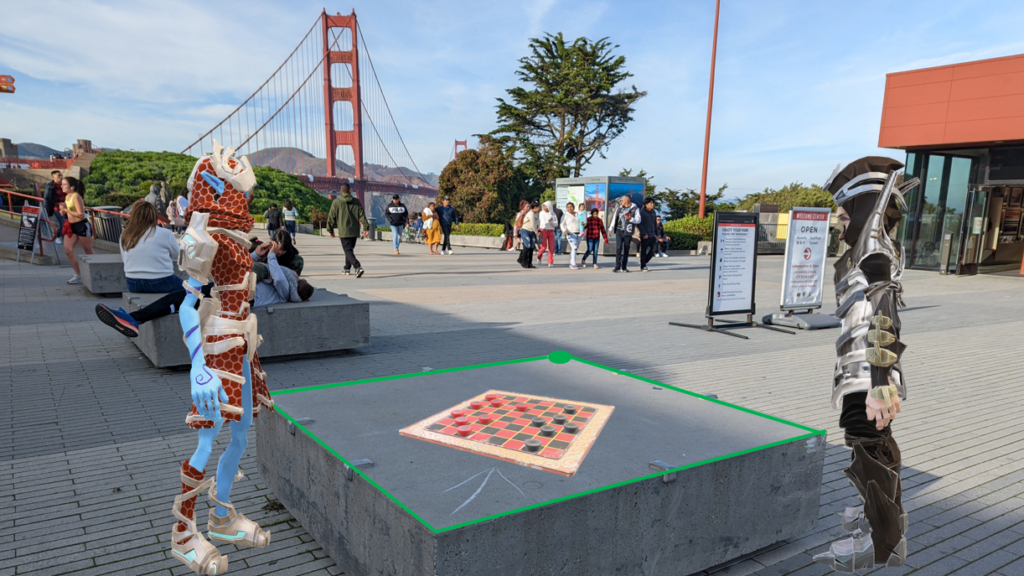
When device manufacturers are able to extend the battery life of AR glasses, we’ll likely see Turn-Based Tactical games that are able to use AR technologies in a meaningful way. For example, adding terrain with varying heights can create more interesting game play than ever before. Final Fantasy Tactics, widely considered as one of the best Tactical Role-Playing games ever produced, integrated varying heights into its battlefields, built with dioramas. This type of terrain gave players more dimensions to plan their strategy from an isometric view. Controls were given to the player to pause and rotate the map, at any time, to choose the optimal angle of attack/defense for each unit on the battlefield.
Yasumi Matsuno’s passion for dioramas made a very unique gaming experience for tactical gameplay and story telling. In the original PlayStation release, there weren’t any cinematic cutscenes, and the Zodiac Brave Story unraveled naturally through the consistent use of beautifully designed dioramas.


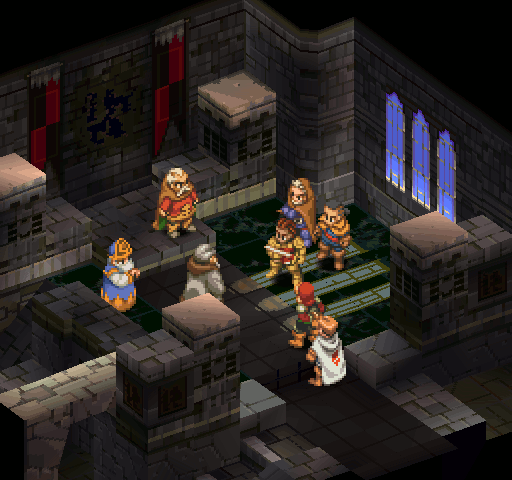
When Final Fantasy VII first came out, summoning spells were wonderfully cinematic. Final Fantasy Tactics had a different take, utilizing dioramas and detailed animations to provide different perspectives of popular summons from the Final Fantasy Series. With dioramas, summoning spells engulfed the battlefield and spectacularly showcased the power of each summon, as shown in the YouTube video below.
In future posts, we will revisit this topic and analyze the market demand for AR games. It will be interesting to see what game genre starts trending up towards a billion dollars in the AR market first. It is likely to create a paradigm shift in the mobile game market, given the heavy investments being made by Meta, Epic Games and Roblox. Hopefully, a game like Final Fantasy Tactics is already in the works for AR glasses. It would certainly peak the interest of Final Fantasy fans around the world.